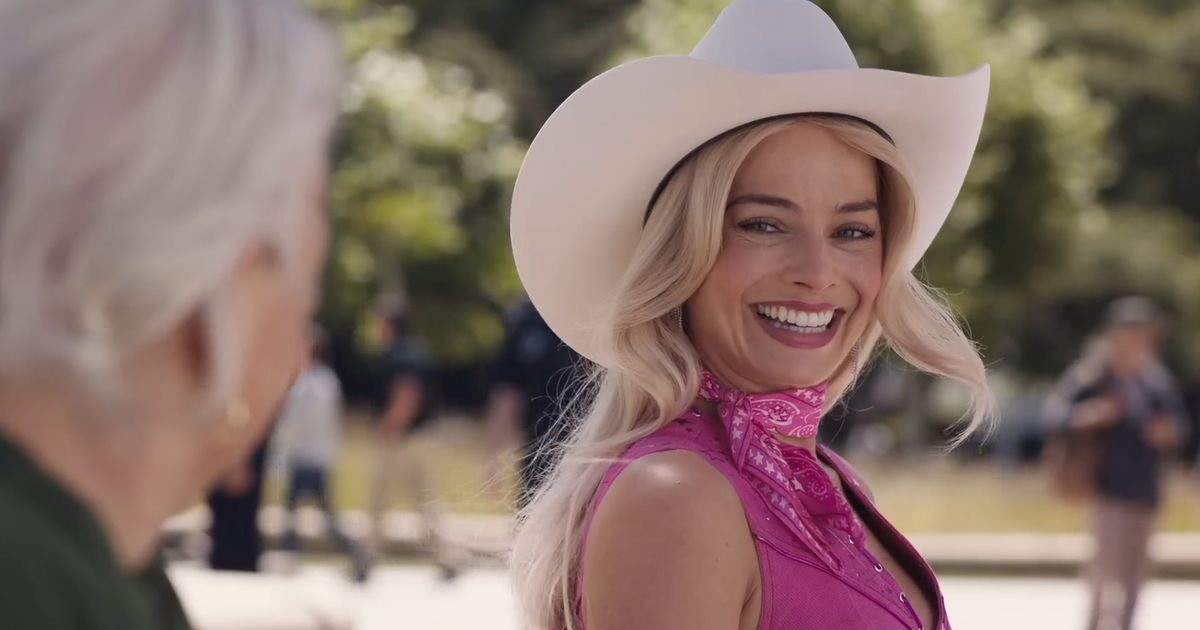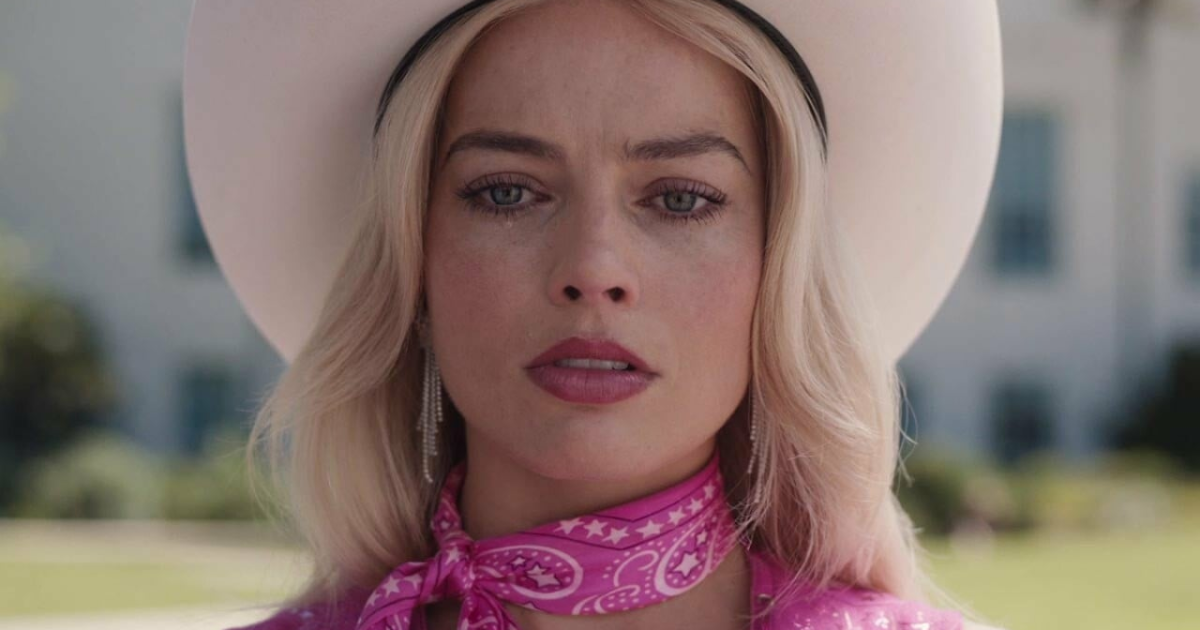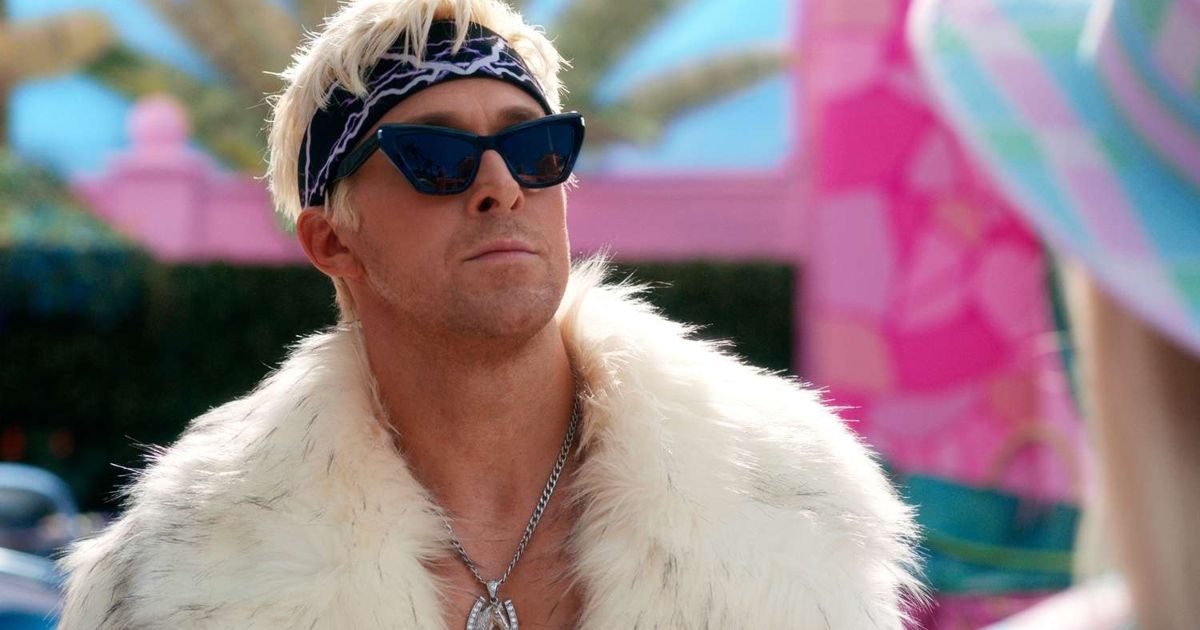Barbie animated features are popularly known for their dreamy fairy tales, amusing adventures, graceful dancing, and positive themes. As time passed, these visually appealing movies saw improvements in their animation and were adapted as per modern times by continuing to promote strong female characters. From watching her daughter play with paper dolls to discovering Barbie for the worldwide market, Ruth Handler’s invention became a popular one. From 2001, the Mattel doll started being adapted into animated films, with the first one being Barbie in The Nutcracker, followed by many other such films with different storylines.
Now in 2023, we have finally gotten our first live-action Barbie movie, helmed by Greta Gerwig with Margot Robbie and Ryan Gosling playing the Mattel dolls Barbie and Ken respectively, which is now in your nearest theaters. While the original Barbie animated features were more targeted at the kids, this live-action version takes a more mature and thought-provoking approach with a PG-13 rating. Both animated features and live-action films have Barbies and Kens, magical dream houses, and a land painted pink, so how do they differ from one another? We’ll answer that in this article.
Diversity Remains At Heart of Barbie
Diversity plays an important role in any movie or TV series because when a kid or even an adult watches a character that is just like them and shares similar experiences, it makes them feel represented. The audience relates and empathize with such characters pretty easily. Earlier Barbie animated movies lacked this heterogeneity, the main character was always a white doll with blonde hair, and blue eyes with a perfect body. Although the animated ones had powerful themes of women empowerment, kindness, and friendship and even progressed over time in giving the main character a bit of different careers over a fairytale narrative, they still didn’t have diverse characters to play major roles.
Barbie Land in Gerwig’s movie was as perfect as in the animated ones. Although it has Margot Robbie playing the stereotypical doll who is perfect in every way just like an animated version, but the film made sure to question her belief and the idea of beauty. It didn’t give her a one-dimensional story but intended to explore different sides of the doll, which many films neglect. This Barbie land had all types of diversity not just in dolls but also in its cast. It remained true to its title of “she’s everything” by showing us Barbies of different professions like doctor, diplomat, journalist, physicist, president and so on. Aside from dolls of all color, body types, and professions, the controversial and canceled dolls were also a part of the movie, like Midge (the pregnant Barbie), Skipper, Allan (ken’s buddy), Video Girl Barbie, Sugar daddy Ken, Pooping Dog, Earring Magic Ken, and others.
Unique Ending & Profound Conversation
As with normal animated films, the main audience is kids, so showing a fantasy storyline does seem understandable, but the predictable endings of these movies do seem unsatisfactory and can sometimes give out the wrong message to young minds. Most of the animated films set unrealistic expectations for love and relationships, and in some, the film’s ending is restricted to the doll getting engaged, which isn’t necessarily bad, but at times can impact young minds negatively because love doesn’t come easily, no relationship is perfect, and marriage is not everyone’s ultimate goal in real life. Yes, but it’s also undeniable that there are also some Barbie movies that have something new to offer to the audience in terms of endings and unique themes. Also, no animated feature has ever touched upon topics of the doll’s controversial nature and history in general, as they focused more on entertainment purpose-stories for kids.
The live-action is more of a thought-provoking movie wrapped in a blanket of comedy and light-hearted sarcasm. The stereotypical Barbie embarks on a journey to the real-world to define her true purpose, but instead learns about the harsh truths. The reality hits hard when she learns about the patriarchal system and how the company that created her didn’t have any powerful women at the table. This Barbie movie doesn’t contain any magical moments or love-like elements but rather focuses on finding “inner beauty”, as Simu Liu said, while at the same time also having real conversations, breaking and addressing long-existing stereotypes about the doll.
By the end, Barbie also acknowledges her mistake of neglecting Ken but also makes a clear choice not to be with him because she simply doesn’t have any feelings for him. But yet, she empowers him to find his own identity rather than being associated with her. One of the main highlights remains Gloria’s speech about women and how it’s difficult to be one because of the constant pressure of fitting in the box of societal expectations. The little moments in the movie like the doll appreciating an aged woman leaves an impact on minds when one realizes that beauty isn’t about being perfect but to embrace one individuality and complexities, such stereotype-challenging moments are hard to find in animated version.
Even though she went to rediscover herself, in the end, she remains lost with no purpose until Ruth Handler comes in. She explains to her that humans do have one ending, but when she made Barbie, she didn’t plan one for her because she is an idea that will live forever and will keep evolving with time. Barbie chooses to be a human after experiencing all the ups and downs of being one. While most animated movies have predictable endings, in live-action the creator’s ghost live it upto Barbie to decide her ending by holding her hand and showing her ups and downs from a girl’s birth till womanhood. The fun fact is the montage shown in the movie is the real moments of the cast and crew with their families and friends adding an emotional depth to the ending scene.
She made the doll choose her ending, which is a good shout out to the roots of Barbie, who, according to Ruth Handler “always represented that a woman has choices”. The movie ends with Barbie, now known as Barbara, visiting a gynecologist, marking her end as a perfect doll and the start of a new chapter in which she will experience the beauty of being a human. The film didn’t give Barbie a happily ever after, but a mic-drop and touching ending. Barbie moments, life conversation, and comedic elements also created an impact on our mind and left us all sobbing and laughing. Through the eyes of the doll, Greta Gerwig showed us the mirror of embracing the complex humans we are.
Ken’s Major Role
Introduced as her sidekick and handsome boyfriend, Ken was introduced two years after Barbie was invented. In most of the Barbie movies, he didn’t have a major role and was always portrayed as her boyfriend, prince, or supporting character. Other movies didn’t even have him, as the movie was just focused on Barbies. His character, too, lacked diversity and wasn’t explored much in the animated version. At times, he was shown as self-centered and a flirt, but some movies also showed him in a positive light as a caring and kind gentleman.
Ryan Gosling takes on the role of Ken and brings a fresh perspective to the character. Even though, at first, he’s portrayed as an accessory to Barbie, whose day is incomplete without Barbie’s glance at him. When he enters the real-world, he comes to the realization that he has much more respect in the real-world than in Barbie land. He is impressed by patriarchy and horses and wants other Kens to know about it too, so he returns to his world. He transforms Barbie’s dream house into Ken’s Mojo Dojo Casa House and Barbie land in Kendom, where patriarchy rules and Barbies are given submissive roles. Even when Barbie comes back, he isn’t ready to give her Barbie land back and gives her the condition of either being his wife-live-in-girlfriend, or low-commitment casual girlfriend. In addition to illustrating toxic masculinity wrapped in humor, this antagonistic side of Ken is something new for the audience and stems from constantly being neglected by Barbie and feeling unappreciated. The influence of the real -world made him feel seen and become a man of power in the world where matriarchy rules.
For the first time in a Barbie movie, Ken is depicted as having more complex feelings and nature than just being another pretty face. In the whole film, he thinks he is nothing without Barbie because he is an accessory to her, but soon the doll makes him realize that he is kenough. She inspires him to find his own identity and purpose beyond the doll’s attention. Instead of making Barbie Land perfect, she chooses to make amends to their existing rule by encouraging the idea of letting even males participate in its running along with the Barbies. It’s good to see Ken play a more prominent role and become the heart of the movie, rather than just being a lovable boyfriend or prince to her. Gosling has shown his enthusiasm for playing Ken since the beginning. Through his representation, he wanted to make the Ken dolls feel seen and bring attention to them, as nobody plays with them (via Collider). It can be said that he did become successful in making people notice Ken dolls through his comedic and power-packed performance, with everyone currently praising his Kenergy.
This story originally appeared on Movieweb



